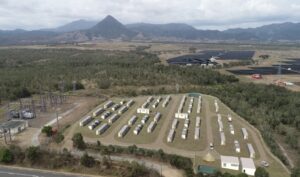The federal Coalition appears to have finally given up on the idea that the ageing and increasingly decrepit and costly Liddell coal fired generator should have its life extended beyond its planned closure date of early 2023. But they are struggling to move away from the idea of fossil fuels.
The Coalition’s extraordinary threats of intervention into the NSW electricity markets – which we studied in detail here and here – masked the end of a four year ideological campaign to try and force AGL to keep Liddell open, or sell it to someone who would – despite the overwhelming environmental, economic and engineering reasons not to.
“The government is not inclined to fund an extension of all or part of Liddell,” the government says in a briefing paper distributed to media (but not to RenewEconomy, we had to get ours from elsewhere).
That’s one small step forward. AGL and just about every serious energy analyst have described the idea of extending Liddell as crazy, and potentially dangerous, particularly for workers in the event of a catastrophic failure.
NSW energy minister Matt Kean said he wanted no part of it. The challenge for the Coalition was how to back out of this idea and hold faith with the rump of the Coalition and conservative commentators who dismiss the science of climate change and who are grossly attached, or indebted, to the fossil fuel industry.
The Coalition did this by threatening to intervene in the market if 1,000MW of “dispatchable” capacity was not built in the place of Liddell, despite the market operator making clear this was not needed. The government said this could be coal, gas, hydro or batteries, as long as the latter was of “appropriate duration”.
We tried to find out what the government meant by a big battery of “appropriate duration”, but Taylor’s office did not respond to our questions.
AGL has flagged a big battery of up to 500MW at Liddell, although it has indicated the initial stage would only likely be around150MW, with around two hours storage, similar to what it has planned for another 200MW/400MWh of battery storage capacity in NSW.
Big battery developers and owners in Australia have so far only looked for short duration storage, mainly because the most fruitful and developed markets lie in services such as frequency response and grid security, which only require minutes rather than hours of storage.
The push to longer term storage for batteries will depend on battery prices, and the cost of charging from renewable energy generators. In the US, where gas prices are cheap, batteries with four hours storage are already beating proposals for gas fired peaking plants.
In Australia, the equation is more complex, but this graph above from the Australian Energy Market Operator suggests that at current gas prices of between $6 and $8 a gigajoule, and it is hard to imagine gas being extracted at a lower cost than that, then it won’t be long before four batteries are a better deal than peaking gas plants.
AGL says that batteries are now starting to compete with peaking gas generators, so much so that it is hailing the “dawn” of a new battery age.
“We see a high value in batteries with the emergence of renewables given the need for firming infrastructure. There is a clear business case for batteries,” chief operating office Markus Brokhof told RenewEconomy last month.
And at least the batteries will get used, and be available to deliver up to 20 different services to the grid – if the regulators ever catch up and create markets for their services.
Infigen Energy, for instance, uses its lake Bonney battery each and every day, and on many occasions throughout the day. Its peaking gas generator at Smithfield, However, is really only there as a last resort. it operates only around 2 per cent of the time. But at least it gets switched on occasionally.
One peaking generator in WA. at Merredin, has pocketed more than $100 million from so-called “capacity payments”, but it has never actually been switched on to provide that capacity, only for a few hours a year just for maintenance
But some Coalition ministers are still living the coal fantasy. The Resources minister Keith Pitt told ABC Radio that he was convinced that the Coalition’s gas plans and support for CCS would lead to “even more coal-fired power stations.” But the only people he is fooling are on Sky News,








